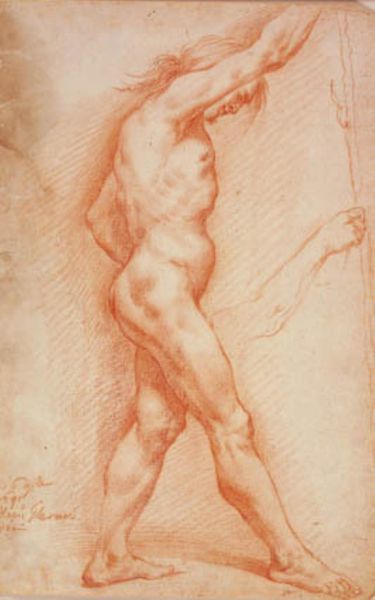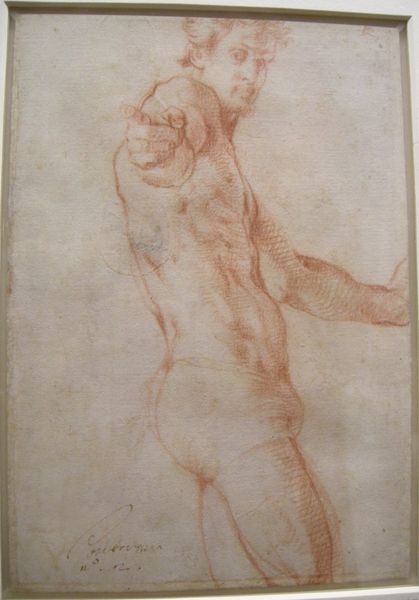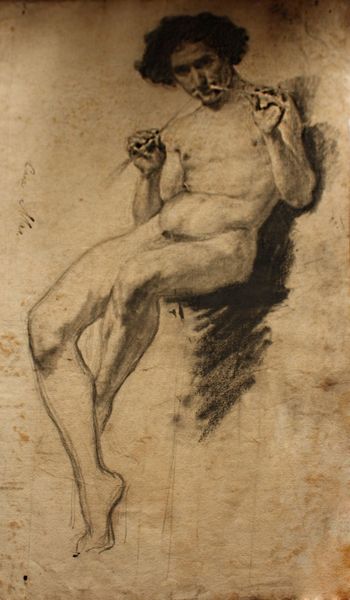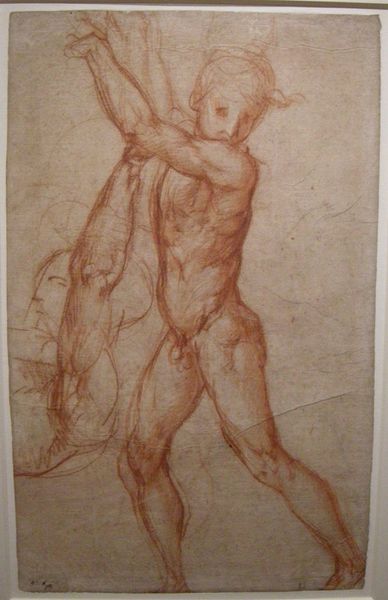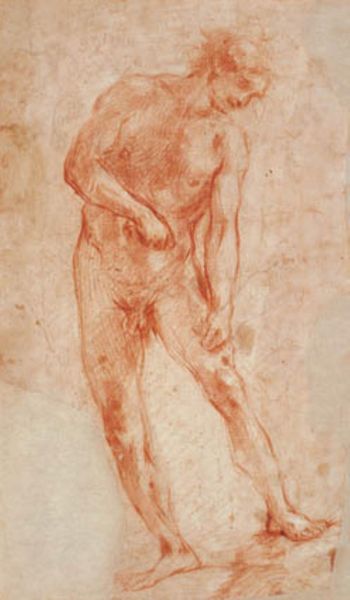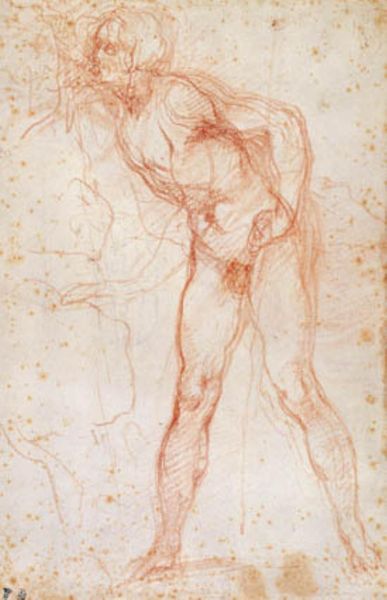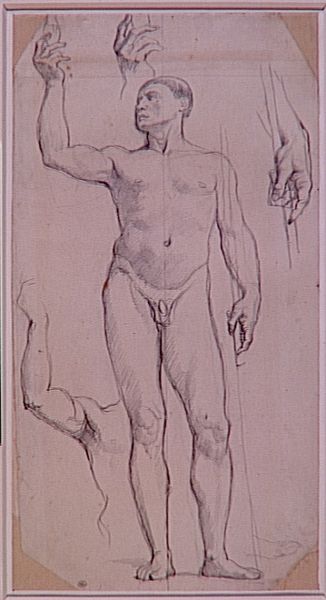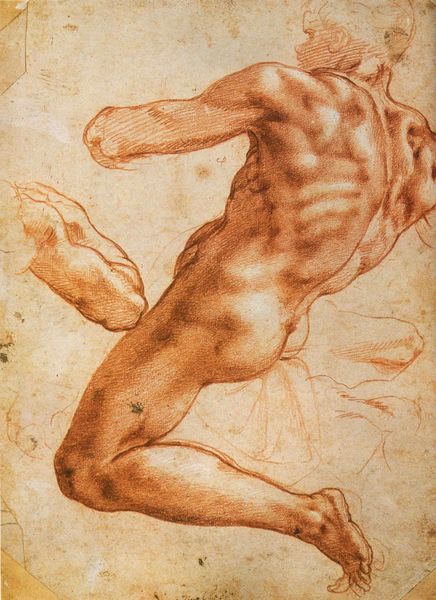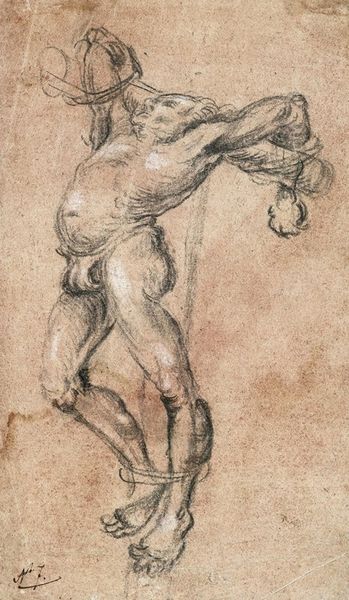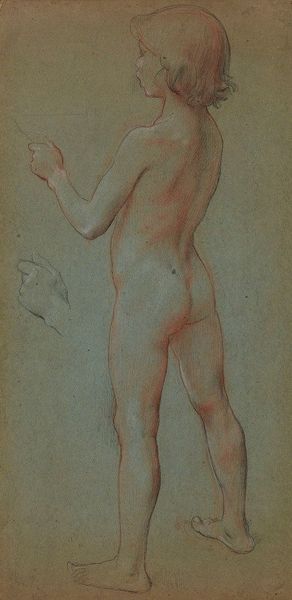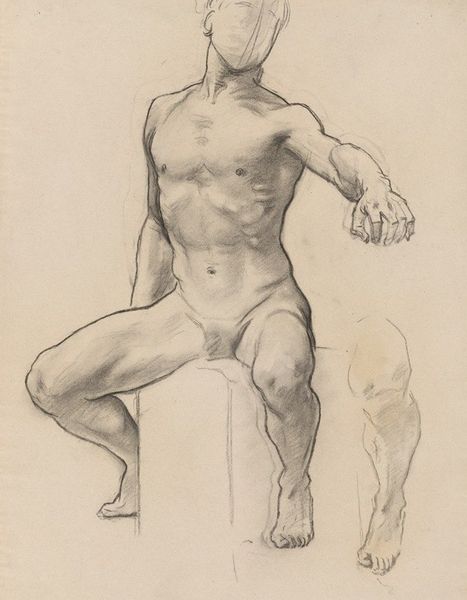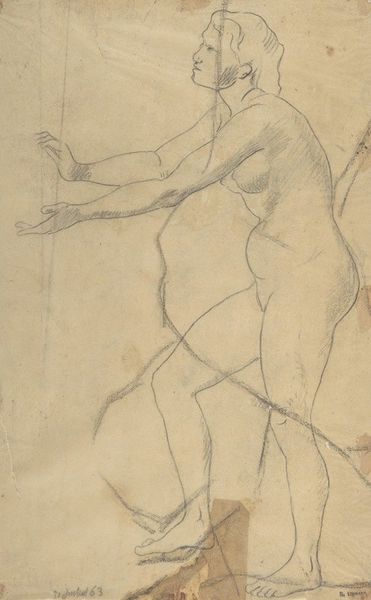
drawing
#
drawing
#
high-renaissance
#
charcoal drawing
#
figuration
#
academic-art
#
nude
Copyright: Public domain
Curator: This is Michelangelo's "Study for Haman," created around 1508. It's a drawing rendered in red chalk and it resides in the British Museum. My first impression is its monumental quality; even as a preparatory drawing, the figure commands attention. Editor: The red chalk itself grabs my attention—I wonder what kind was used and what determined that choice? You can almost feel the pressure of Michelangelo’s hand on the paper, building form through repeated strokes. This is labor and material manifesting before us. Curator: Precisely! The cross-hatching is crucial. Notice how Michelangelo uses it to define the musculature and imbue the figure with dynamic energy. The light seems to emanate from within. It is about an intellectual ideal of the form as the High Renaissance style dictated. Editor: An ideal form achieved through… what? Manual skill! Each line is a physical act of translation. He's rendering flesh and blood using humble materials. The support it's also telling us a lot: How big was it, where was it manufactured? Where did Michelangelo source it? And the economic circumstances around the access he had to high quality paper. Curator: You’re right; one cannot deny the artistry embedded in the materiality itself. But think of the composition—the torso, legs, and feet all meticulously studied separately, as fragments, coming together to inform his larger vision. This echoes classical sculpture—dissected, understood, then idealized. Editor: I’m just drawn to the physicality, the graft, you see, because art doesn’t magically happen, and it doesn't spring up out of genius' head, even in Michelangelo's. The rough, unfinished quality—the exposed processes—reveals that labour. It disrupts the narrative of effortless virtuosity. Curator: Perhaps... and yet, there is still the unmistakable pursuit of perfection through line and form. But I see your point about the raw materiality inviting us to appreciate the work involved. Editor: Exactly. Recognizing labor should not take anything away from the virtuosity, or detract from how intellectual or ideal his goal was, I am just expanding that notion. Curator: Fair enough. Studying its composition alongside its materiality grants a deeper appreciation of this master's practice. Editor: Yes. Focusing on materials reminds us that "genius" is inseparable from human, and material conditions.
Comments
No comments
Be the first to comment and join the conversation on the ultimate creative platform.
